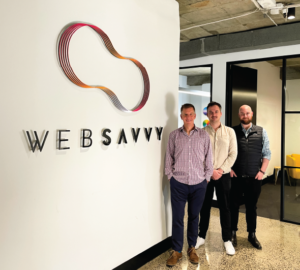Right now, discussion around Artificial Intelligence (AI) in digital marketing and Search Engine Optimisation (SEO) is at fever pitch. Every week there seems to be a new development, whether it be algorithm changes based on machine learning, incorporating AI assistants into search results, or doomsday discussions about how the next iteration of ChatGPT4.XX is smart enough to pass the bar exam and is going to make us all obsolete.
Although AI is always there in the background, the recent launches of ChatGPT and New Bing, announcements around Google’s Bard, and new developments with text-to-image models like Stable Diffusion, have thrust the discourse back into the spotlight.
These latest developments only reinforce the pre-existing opinions about how AI is able to do all our work for us…Or on the other end of the scale, AI is our greatest enemy and is best shunned completely.
But, as SEOs should we really be shaking in our boots or be excited to embrace this new technology?
So, how should you think of AI?
Reframing how you think about AI is important. It’s not the monster trying to steal your job, nor is it the saviour that will automate all your work and save you from hiring real people.
Instead, you can think of AI as your new handy assistant who can automate some of your workflow, or can help take on some of your workload… But it isn’t trusted to completely steer the ship. AI is here to streamline some of your mundane tasks and processes and hopefully free you up to concentrate on strategic and higher-level tasks.
An analogy that I like to use to explain this is by imagining an architect designing a building; creating the blueprints, selecting the materials and how to best layout based on their clients’ requirements. The architect’s expertise and experience are crucial to ensure that the building is functional, aesthetically pleasing, and above all, meets the needs of the client.
Now, let’s say an AI is the builder tasked with constructing the building based on the architect’s blueprints. The AI is incredibly efficient; able to work around the clock, and can accurately follow the plans to the smallest detail. However, it still lacks the creativity and critical thinking skills of the architect.
Similarly, an SEO specialist is like the architect in that they use their experience and expertise to design an SEO strategy that meets the needs of the client. They meet with a client to understand business goals, KPIs, limitations, competitive threats, industry know-how, etc. An SEO specialist also understands the nuances of search engines and how best to improve rankings and drive targeted traffic/leads/sales based on the context of the campaign.
AI can assist with streamlining many of the tasks involved in SEO, such as keyword research and intent mapping, basic metadata or structured data creation, and redirect pattern matching.

ChatGPT is smart enough to take unstructured data and convert it into valid Schema for me quickly and effortlessly. But it simply cannot replace the real-world experience, the strategic thinking, and the creativity needed from an SEO specialist. The specialist is still essential in developing the overall SEO strategy, analysing data, and making decisions based on the results and context of the situation.
Just as the architect’s design vision cannot be replicated by the builder, this experience and expertise cannot simply be replaced by AI.
How can AI help you in SEO?
When it comes to AI, one of its biggest strengths is pattern matching. It’s especially good at working with data, whether that is finding errors in code, regex generation, or turning unstructured data into structured data. 301 redirect matching logic and international hreflangs are also tasks that an AI could do much more quickly and efficiently on first attempt. These time intensive tasks are good for an AI who can perform them much more efficiently than a human – however, they still need to be vetted and reviewed.
If you are working on a website with limited rich media resources, using AI to generate unique images is also a growing field. A picture is worth a thousand words, and imagery can play a significant role in how well your site performs. AI is getting stronger at developing images based on prompts and can create some pretty solid images at a fraction of the cost and time than a traditional graphic designer.
AI can also be used to remove unwanted objects from backgrounds, generate brand new images from text prompts, or create new images to better show ideas visually.
Here are some images generated using Stable Diffusion for the prompt:
| Prompt: RAW photo, a photo of a cat, (using a microphone:1.3), meeting room background, (high detailed fur:1.2), (high detailed eyes:1.2), 8k uhd, dslr, soft indoor lighting, high quality, film grain, Fujifilm XT3Negative prompt: (deformed iris, deformed pupils, semi-realistic, cgi, 3d, render, sketch, cartoon, drawing, anime:1.4), text, close up, cropped, out of frame, worst quality, low quality, jpeg artifacts, ugly, duplicate, morbid, mutilated, extra fingers, mutated hands, poorly drawn hands, poorly drawn face, mutation, deformed, blurry, dehydrated, bad anatomy, bad proportions, extra limbs, cloned face, disfigured, gross proportions, malformed limbs, missing arms, missing legs, extra arms, extra legs, fused fingers, too many fingers, long neck Euler A, 20 Sampling Steps, CFG 7. ChillOutMix-NiPrune model. |


| Prompt: RAW photo, a photo of a tradesperson painting a fence, slim body, backyard background, (high detailed skin:1.2), 8k uhd, dslr, soft outdoor lighting, high quality, film grain, Fujifilm XT3Negative prompt: (deformed iris, deformed pupils, semi-realistic, cgi, 3d, render, sketch, cartoon, drawing, anime:1.4), text, close up, cropped, out of frame, worst quality, low quality, jpeg artifacts, ugly, duplicate, morbid, mutilated, extra fingers, mutated hands, poorly drawn hands, poorly drawn face, mutation, deformed, blurry, dehydrated, bad anatomy, bad proportions, extra limbs, cloned face, disfigured, gross proportions, malformed limbs, missing arms, missing legs, extra arms, extra legs, fused fingers, too many fingers, long neck Euler A, 20 Sampling Steps, CFG 7. Realistic Vision V1.3 model. |

Where is AI more limited?
Unlike a human SEO, AI currently isn’t able to review your website and create a comprehensive strategy to meet your marketing goals.
With the new developments in AI, think ChatGPT, there’s been a real novelty factor in content creation. Sure, AI can write a pretty poem, but when it comes to writing a blog article with a unique point of view it will struggle. In content writing, AI is best used for the stock standard stuff. Whether that’s creating a few quick social media caption ideas to develop on or some blog idea inspiration, AI can provide you with a solid starting point.
AI can’t interpret nuance. As it’s built on and trained on content that already exists, it won’t necessarily create something that will be viewed as high quality by the search engines. They don’t want ten websites with the same content, they are looking for different perspectives and ideas which meet the EEAT principles.
AI is also being touted for its abilities to predict future trends. This can be tricky when it comes to SEO, which isn’t always easily attributable. Attribution modelling is not perfect at best, with SEO, paid, social, display, offline, etc all working to increase brand awareness, but which channel was the one that actually motivated the prospect to take action?
AI models are typically trained on historical data, but the past performance of a website’s SEO strategies does not necessarily guarantee future success. What worked for a website in the past may not necessarily work in the future, especially as search intent changes, new competitors enter the market, and search engines incorporate new features or algorithm systems are tweaked and modified.
Ultimately, how can AI be used to your advantage?
AI needs direction. It can colour within the lines but it needs you to first decide what the lines are. I’m finding it a very powerful tool that can help me start many tasks, but I still need to verify the solution or information that it gives back to me manually. It’s really an exciting time to be involved in SEO and I really look forward to the positive impact AI can make on SEO.
In summary, like fire, the wheel, the washing machine, the internet, or the smartphone before it, AI can be used to improve our jobs and lives in many ways, but it is important to remember that these technologies are not inherently good or bad. It is up to us as a society to determine how we want to use them and to develop regulations and ethical guidelines to ensure that their use aligns with our values and goals.
If humans can learn how to harness the power of AI and use it for good, it will be more valuable than just humans, or just AI.
Jim Ferguson is Head of SEO at Optimising








